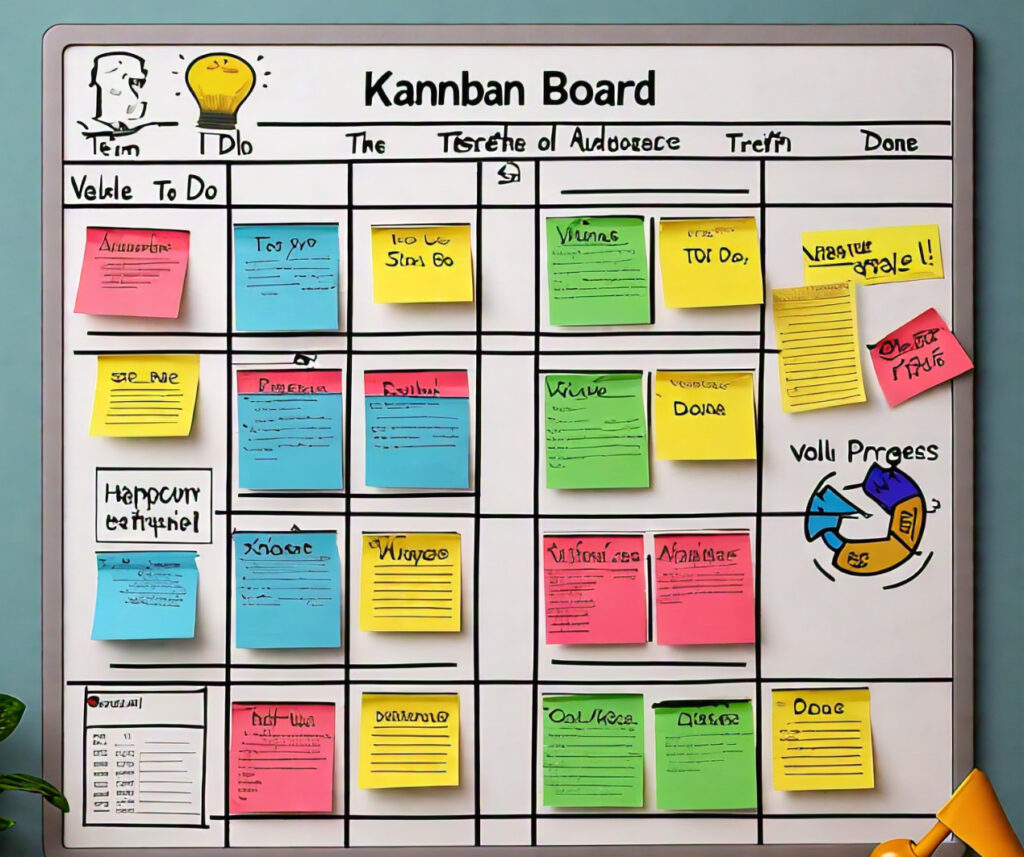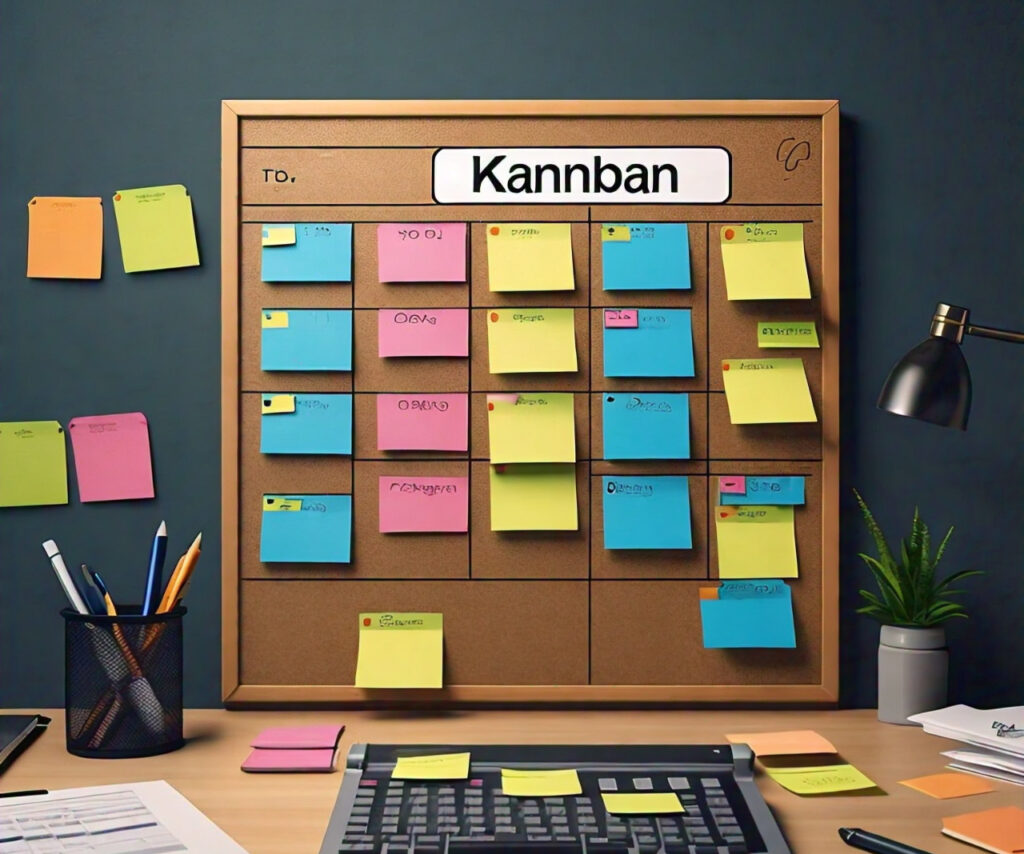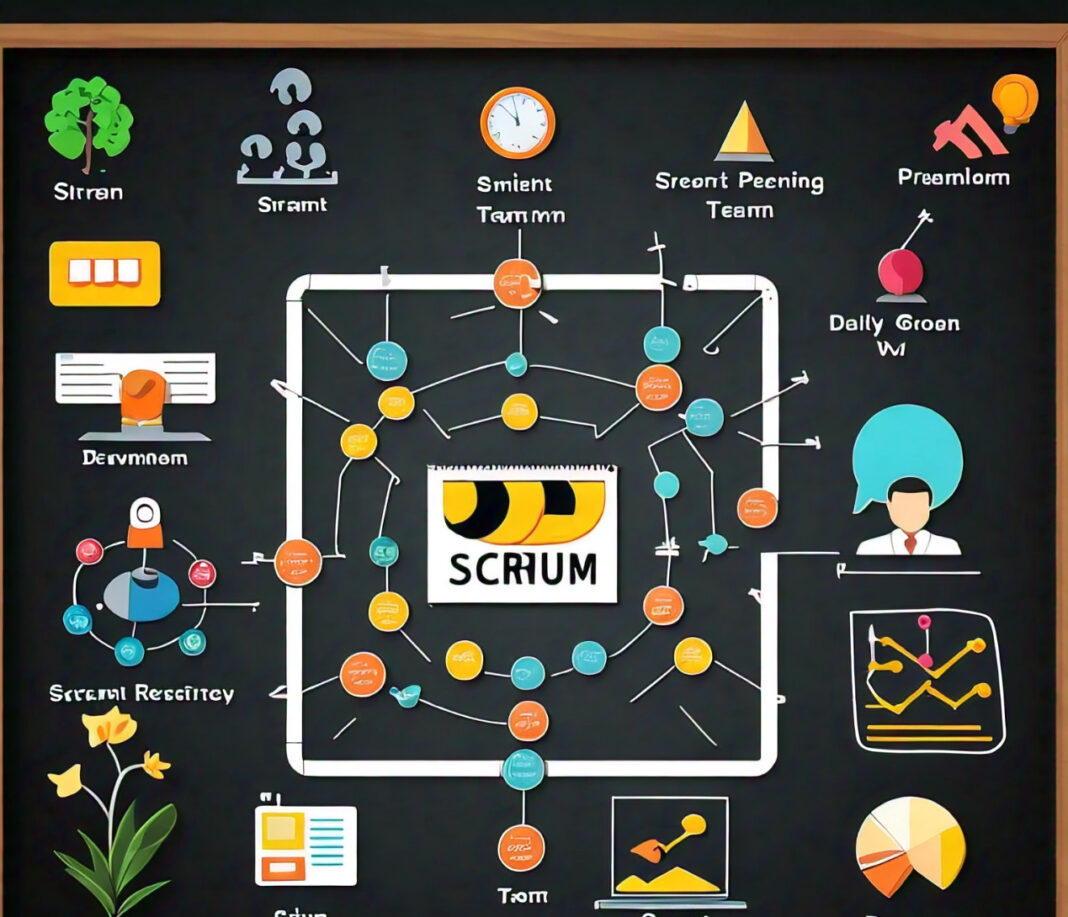Kanban is a lean project management way originally deployed in the Toyota manufacturing structure in the late 1940s. It has seen continuous evolution since and is today deployed across functions and industries in the domain of software development and IT operations.

An emphasis is given to the visualization of work, limitations on work in progress, and flow optimization of work through a process. Compared to other Agile methods, say Scrum, which has predefined roles, ceremonies, and time-boxed iterations, Kanban is quite flexible and can be gradually implemented into the existing workflows without any major shock.
Principles of Kanban
Kanban is based on a few key principles and practices that guide its implementation and use. The principles focus on work management and improvement by visualizing the process, limiting the work in progress, and using data to drive decisions and continuous improvement.
#### 1. **Visualize the Workflow**
The first principle of Kanban is visualization of the workflow. In the context of a board, you might also see that it can become easier to see what is going on in the process and to recognize hotspots, or, paradoxically, to talk more concretely about the state of particular tasks.
**Kanban Board** – Most work visualization in Kanban is done using a Kanban board. The most common board format is a division into columns for the different stages a workflow item goes through. For instance, this might be To Do, In Progress, Testing, or Done. The work items are expressed as cards moving from left to right across the board through the workflow.
– **Transparency**: Visualization makes the workflow process clear. Every member of the team gets an idea of what’s being worked on, who’s doing what, and what’s in the pipeline. This kind of visibility helps in early problem recognition and makes team communication effective.

#### 2. **Limit Work in Progress (WIP)**
The core of Kanban is limiting work in progress. This essentially applies to putting a maximum number to the amount of work items that can be placed into the WIP stage at any given time. This prevents the team from being overloaded, minimizes frequent context-switching, and allows the team to focus on completing work rather than starting new work.
– ** WIP Limits**: WIP limits are set for each column or stage in the kanban board. For example, a team could have a WIP limit of three in the “In Progress” column, which means no more than three tasks could be worked on at a go in that specific stage. If the limit is reached, no new tasks can be started in that specific column until one of the in-process tasks is moved to the next column.
•**Flow Efficiency**: WIP limits control the amount of work taken up by a team. If tasks are taken up in excess, then automatically, the work will slow down leading to a bottleneck, which usually brings about inefficiency and delays. WIP limits tend to keep a relatively steady pace, ensuring that the flow of tasks through the system is efficient most of the time.
Flow management stands for checking and balancing the flow and movement of tasks in the workflow. Through this, the goal is to achieve a smooth, consistent flow of work from start to finish while minimizing delays and maximizing efficiency.
• **Flow Metrics**: The flow process in Kanban teams is often measured and tracked using flow metrics. The most common ways are cycle time — that is, how long it takes for an item to get from start to finish — lead time, which is from the time an item is requested to the time when it is completed, and throughput, or the number of items delivered within a specific timeframe.
– **Continuous Improvement**: It brings out the areas where metrics of flow could be improved and based on it, teams could plan out the process modifications. For example, the frequently occurring delays in the cycle time of work done at some stage will make the team realize its causes and thus bring changes to prevent these delays.
#### 4. **Make Process Policies Explicit**
Kanban must make process policies explicit. This is to lay down clear rules, which are guidelines for guiding work execution, moving tasks to the next stage, and criteria that must be met for a task to be moved to the next stage. It also determines how WIP limits are enforced.
– **Clarity of Process**: This helps in the realization of team understanding of the process; the clarity reduces confusion and ensures that workflow moves smoothly.
– **Shared Understanding**: When there is shared understanding through making explicit policies, the team can discover how they should be doing work together. The shared understanding created is very important in keeping a team aligned and working together.
#### 5. **Build Feedback Loops**
The feedback loops are integral to the continuous improvement within Kanban. This brings out a regular review of the process—what is good and what parts need amending.
Cadence Meetings: Cadences such as daily stand-ups, retrospectives, and service delivery reviews can be utilized in Kanban teams to give them structured opportunities for feedback and reflection. These meetings serve to keep teams aligned, address issues, and continuously improve the workflow.
– **Customer Feedback**: Other than internal feedback loops, Kanban insists on using feedback from customers and stakeholders. This external feedback should help ensure that the team is delivering value or meeting its customers’ needs.
Kanban enables collective experimental changes in culture and practice to find process improvement opportunities. Ideas do well when the whole team is involved, so small incremental changes in the process are done initially.
– **Kaizen mindset**: Kanban welcomes the Kaizen mindset of thinking towards improvement. Teams are supposed to experiment with changes, measure the results of these changes, and adapt their process based on what they learn.
– **Empowerment**: Kanban empowers an individual and, subsequently, the team with the process’s ownership for improvement to contribute to the overall success of the project.
### Implementing Kanban
Thus, putting Kanban in place in a team or organization means implementing its principles and practices in a way that fits the actual flow of work. Kanban is flexible and can be adopted incrementally, unlike many other methods that need to sweep away the existing process structures.
One of the greatest benefits of Kanban is that it enables a team to start with its current process and then initiate small, focused changes. No sweeping changes are made upfront, nor are there newly adopted roles and ceremonies.
** Map Workflow**: This is the first step to take in the implementation of Kanban. It is the conduct of identifying the work stages that a task goes through from the start to the finish and visually locates them on a Kanban board. The existing policy in the process and WIP limits should also be documented by the team.
– **Identify Bottlenecks**: Once the workflow is visualized, the team can get down to the work of identifying bottlenecks or any point in the process where a task tends to stick. Bottlenecks create opportunities.
#### 2. **Create a Kanban Board**
The Kanban Board is the base tool of Kanban, which gives the visual of work and workflow. The structure of the board itself could either be physical—for example, whiteboards with sticky notes—or digital, in software tools like Trello, Jira, or Kanbanize.
– ** Columns and Cards **: The board is divided into multiple columns, each of which represents a stage in the workflow (for example: What to Do, Work in Progress, Work Complete). In its simplest form, cards moving from one column to the next represent how the work item transitions through the workflow from left to right.
– **WIP Limits**: The team has to set WIP limits to every column to ensure that whatever is in progress does not become overwhelming. These limits prevent overloading and maintain a constant flow of tasks.
#### 3. **Implement WIP Limits**
The other important aspect of implementing Kanban is having WIP limits and enforcing those principles. These limits have to be based on how much load a team can handle and how hard a task gets at a certain stage.
– **Start very Small**: Teams new to Kanban may lead to working with higher levels of WIP initially and reduce step by step when they handle work better. The essence is in establishing a balanced quantity, flow, and maximum level of workload that will not overburden the team.
– **Adjust if necessary** – If set WIP limits are not okay or they fail to work, it is possible to adjust them based on what the team learns and feedback. The WIP limits are also refined after their regular review in the continuous improvement process.
Once the Kanban board and WIP limits have been established, a team can now begin controlling and managing work in progress. This, therefore, becomes a time to review the board frequently, track flow measures, and make changes to have the process optimized.
– **Daily Stand-Ups**: Most of the Kanban teams do have stand-up meetings daily; these meetings mostly revolve around the work status of the tasks, any impediments noticed, and how to plan the work for that specific day. These meetings are usually extremely brief and succinct with the main intention of keeping the entire team aligned and hiccups resolved judiciously.
– **Monitor Flow Metrics**: The team will track central flow metrics for instance cycle time, lead time, and throughput. Analysis of the flow metrics determines if the system is functioning efficiently and, therefore, highlights areas of improvement.
The feedback loops are very important because they ensure that the performance and the procedural ways and means of the team are better honed and adapted. It can be operationalized in the form of regular meetings on the performance of the team through, for example, retrospectives or service delivery reviews.
– **Retrospectives**: A common practice in Agile methodologies, they are just as valuable in Kanban. What went well, what could have been improved, and most importantly, what needs to be done to enhance a process, all fall into the discussion.
– **Service Delivery Reviews**: Service delivery reviews are about the performance of the entire workflow and relate to customer satisfaction, quality, and delivery time. It is very important to get an overview of these reviews and how the process is serving the team and its objectives to achieve the customers.
#### 6. **Continuously Improve**
A key aspect of Kanban is continuous improvement. The team needs to devote itself to a cycle of continuous review of its process, experiment with changes, and learn from the outcome.
– **Kaizen Events**: A small number of groups make use of Kaizen






